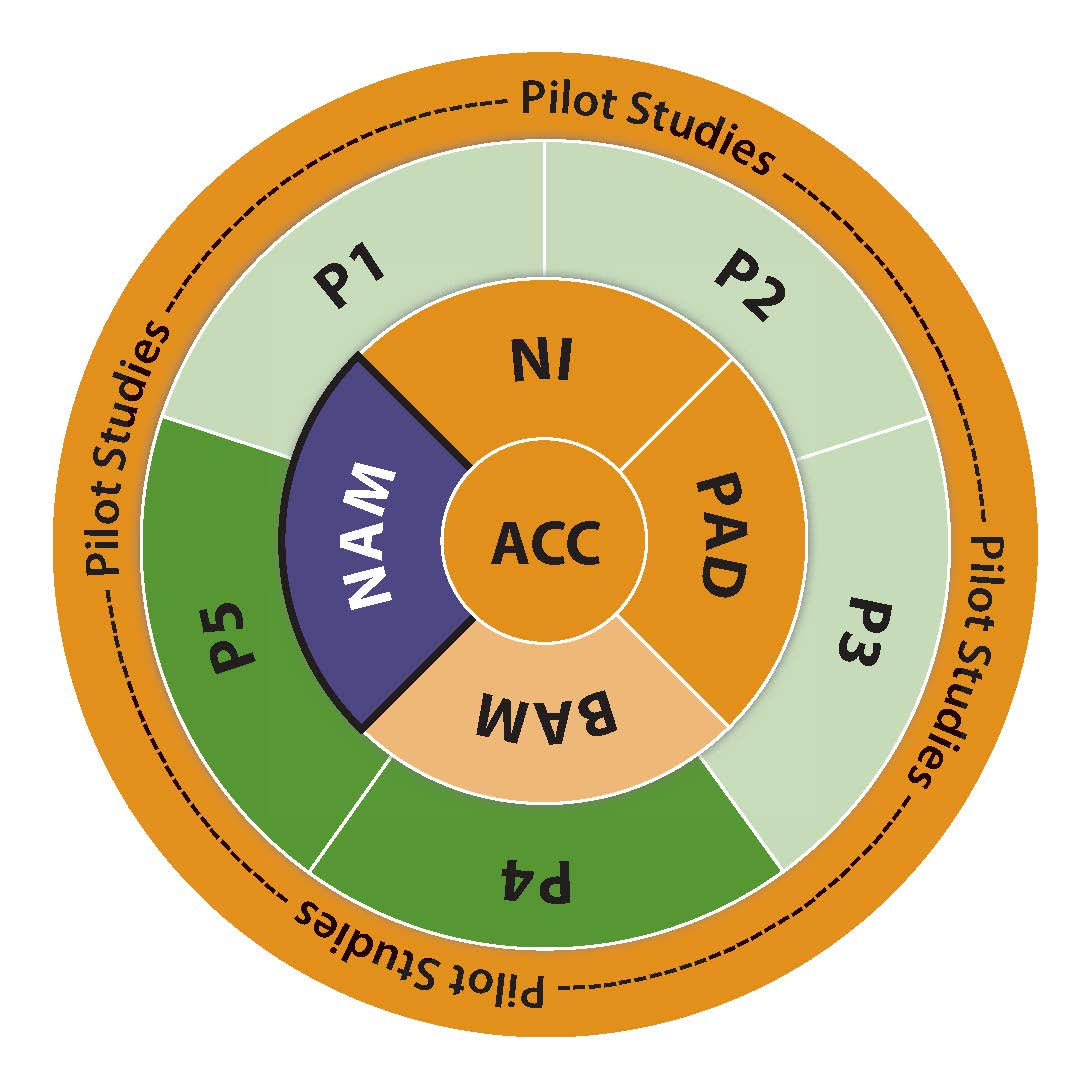Neuroscience and Animal Models (NAM) Core
Core Director: Cristian Achim, M.D., Ph.D.
Co-Investigators: Marcus Kaul, Ph.D.; Virawudh Soontornniyomkij, M.D.

Summary
The NAM Core serves both as a resource for TMARC and as a scientific platform for translating clinical observations into appropriate in vitro and in vivo experimental models to study mechanisms of disease associated with METH/HIV-induced brain injury.
The Core Resource Objectives are to:
- Provide transgenic (gp120 and inducible (i)Tat) animals that exhibit CNS pathology associated with HIV
- Provide the infrastructure for molecular analysis of the pathologic substrates in METH/HIV-associated brain injury in HIV transgenic (tg) animals exposed to METH; furthermore, through linkage to the California NeuroAIDS Tissue Network (CNTN), the NAM Core will also access banked brain tissues that will support the translational aim of cross validating animal and human neuropathology, and finally, for in vitro studies we will provide experimental systems based on primary human neuroglial cultures, neuronal cell lines, and brain vascular smooth muscle cells
- Foster translational research ideas by supporting Pilot Studies and training in the field of experimental neuropathology for young investigators.
The Core Scientific Objectives are to:
- Analyze the neuropathology induced by METH exposure in HIV tg animals, young and aged
- Design neuropathologic analyses of HIV brains banked through the CNTN focused on aging, vascular and immune-mediated pathology associated with METH
- Generate, through support of Pilot studies, preliminary data for future developmental projects within TMARC focused on issues such as chronic brain inflammation, metabolic and oxidative stress, aging and brain vascular pathology, METH effects on social cognition in HIV tg animals, and neuroprotective interventions.
Relevance
Studies within the NAM Core will generate experimental neuropathology findings to be validated in the clinical setting. The long-term goals include validation of the neuropathologic correlates vis-à-vis clinical evaluations, development of projects targeting new mechanisms of disease, and pioneering therapeutic interventions in the METH/HIV brain injury.
